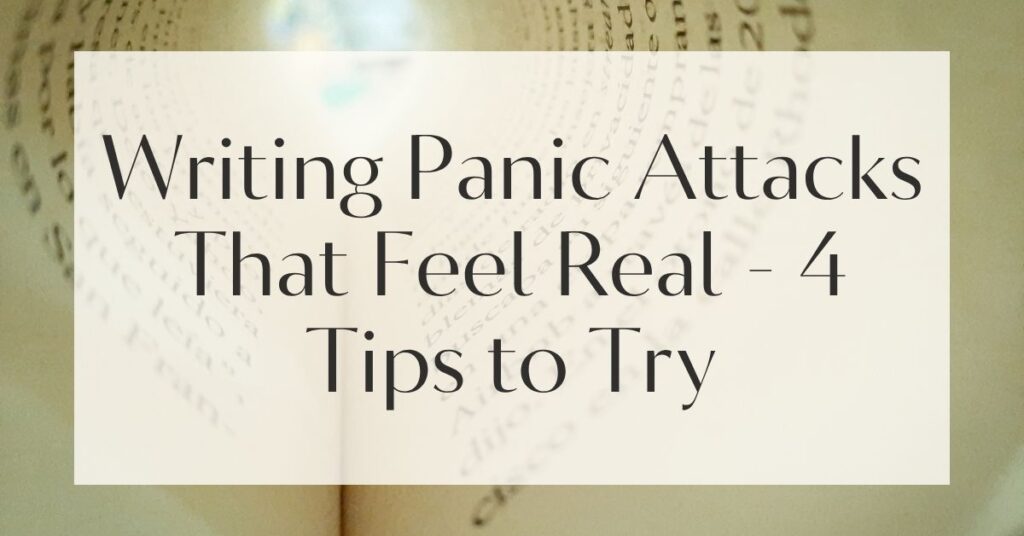Have you ever found yourself gripped by an intense emotion, one that seems to spiral out of control, leaving you breathless and bewildered? That’s what a panic attack can feel like.
For writers aiming to depict this overwhelming experience, capturing its essence authentically is both a challenge and an opportunity to foster understanding. But how can you bring this chaotic moment to life on the page with accuracy and empathy?
Understanding Panic Attacks
Before you can write about panic attacks convincingly, it’s crucial to understand what they entail. These episodes are more than just fleeting moments of anxiety; they are profound experiences that can leave individuals feeling isolated and misunderstood.
No marketing platform? No social following? No problem!
Publisher Rocket helps you market your debut novel like a pro.
It’s a gamechanger for debut authors – try it today!


Defining Panic Attacks and Their Symptoms
Panic attacks are sudden episodes of intense fear that trigger severe physical reactions when there is no real danger or apparent cause. Imagine your heart racing like a wild animal chasing you, yet you’re simply sitting at your desk.
Common symptoms include heart palpitations, shortness of breath, dizziness, and a sense of impending doom. It’s not uncommon for individuals experiencing their first panic attack to mistake it for a heart attack.
When writing panic attacks, use vivid language to describe the physical symptoms. This helps readers empathize with the character’s experience. Instead of saying “he felt anxious,” illustrate it with “his heart thundered in his chest, and his breath came in ragged gasps.”
Common Triggers for Panic Attacks
A variety of factors can trigger panic attacks, and understanding these can help you create realistic scenarios. For some, it might be a crowded room or a stressful situation.
For others, it could be a specific memory or fear. Interestingly, even positive events, like falling in love, can trigger a panic attack due to the overwhelming emotions involved. The unpredictability of triggers adds to the complexity of panic attacks, making them unique to each individual.

Crafting Realistic Panic Attack Scenes
Bringing a panic attack to life in writing requires a balance of detail and emotional depth. It’s not just about listing symptoms but weaving them into a narrative that resonates with readers.
Describing Physical Reactions Effectively
The physical manifestations of a panic attack are intense and varied. They can range from a pounding heart and sweating to dizziness and nausea. To convey this effectively, focus on sensory details.
Describe the sensation of the room spinning, the taste of bile rising in the throat, or the feel of sweat trickling down the spine. These details create a visceral experience for the reader.
| Symptom | Description |
|---|---|
| Heart Palpitations | A sensation of the heart beating rapidly or irregularly |
| Shortness of Breath | Feeling as though you can’t get enough air |
| Dizziness | A feeling of lightheadedness or unsteadiness |
Capturing Emotional Responses During an Attack
Emotionally, panic attacks can be a rollercoaster. They often start with a sense of unease that escalates to full-blown terror. Characters may feel a loss of control or a fear of dying.
These emotions are raw and primal, driving the narrative tension. Show how the character’s thoughts race, how logic gives way to irrational fears, and how desperation creeps in.
Use stream-of-consciousness techniques to enhance the emotional impact. This allows readers to follow the character’s rapid thoughts and emotions in real time, heightening the sense of urgency and chaos.
Google Docs is for notes. Scrivener is for novels. Upgrade your writing game and try it for free today!

Using Sensory Details to Enhance Authenticity
Sensory details are key to creating an authentic panic attack scene. They ground the reader in the character’s experience.
Consider the sounds of the environment—perhaps the ticking of a clock feels deafening, or the chatter of a crowd becomes overwhelming white noise. The smell of sweat or antiseptic can evoke a sense of place and heighten the tension. By engaging multiple senses, you make the scene more immersive.
- Sound: The pounding of blood in the ears
- Smell: A metallic taste in the mouth
- Touch: Clammy skin, shaking hands

Empathy in Writing About Mental Health
Empathy is paramount when writing about mental health. It ensures that your portrayal is respectful and avoids perpetuating harmful stereotypes.
The Importance of Compassionate Language
Language shapes perception. Using compassionate and accurate language when describing panic attacks fosters understanding and reduces stigma.
Avoid terms that trivialize the experience, such as “freaking out” or “losing it.” Instead, opt for language that acknowledges the gravity of the situation, like “experiencing an intense panic episode.”
When discussing mental health topics, always prioritize person-first language. For example, say “a person experiencing a panic attack” rather than “a panicked person.” This respects the individual’s humanity beyond their condition.
Avoiding Stigmatizing Portrayals of Panic Attacks
It’s crucial to avoid portraying panic attacks as signs of weakness or failure. This perpetuates harmful stereotypes and can alienate readers who have experienced similar struggles.
Instead, depict characters with strength and resilience, showing how they cope and find support. Highlight the courage it takes to face and manage such a challenging experience.
Feeling lost with your debut novel?
Fiverr Pro connects you with expert editors, designers, and marketers – everything you need to get your book ready for success!

Practical Tips for Writers
Writing about panic attacks with authenticity requires a thoughtful approach. Here are some practical tips to help you create compelling and empathetic narratives.
Techniques for Authentic Character Reactions
Characters should react in ways that reflect their personalities and backgrounds. A reserved character might internalize their panic, while an extroverted one might seek immediate help.
Consider how past experiences shape their responses. Are they familiar with panic attacks, or is this their first encounter? Tailor their reactions to these nuances for a more believable portrayal.

Incorporating Personal Anecdotes for Relatability
Personal anecdotes can add depth and relatability to your writing. If you’ve experienced panic attacks or know someone who has, drawing from those experiences can lend authenticity. However, it’s essential to handle these stories with care and consent, respecting privacy and boundaries.
Engaging Readers in a Supportive Dialogue
Writing about panic attacks offers an opportunity to engage readers in a broader conversation about mental health. Encourage readers to share their thoughts and experiences in the comments or through social media.
This fosters community and support, reminding individuals that they are not alone in their struggles.
At the end of your article, invite readers to reflect on their experiences or discuss the themes with others. This enriches the dialogue and empowers readers to connect and support one another.








